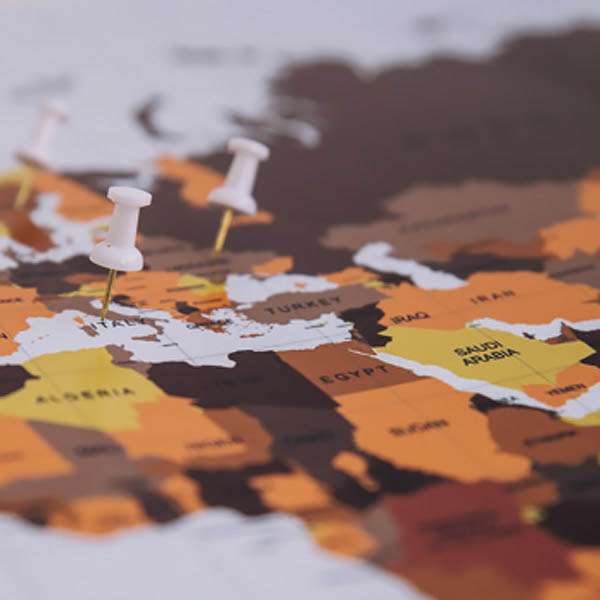
Международное гуманитарное право (МГП)

История
ИСТОРИЯ
История МГП : до кодификации
ВЕРА И ФИЛОСОФИЯ
КОДЕКСЫ ЧЕСТИ
ОБЫЧАИ
буддизм, иудаизм, христианство, ислам , Руссо, Дюнан, Мартенс
Бусидо, кодексы чести в Европе
африканские обычаи, древняя Греция, законы Ману
Во многих древних книгах, таких как Махабхарата, Библия и Коран, содержатся правила уважения к противнику. К примеру, вот что говорится в Коране [1] , сура 47 (4) : «А когда вы встретите тех, которые не уверовали, то – удар мечом по шее; а когда произведете великое избиение их, то укрепляйте узы. Либо милость потом, либо выкуп, пока война не сложит своих нош. Так! А если бы пожелал Аллах, он помог бы Себе против них, но (это для того), чтобы одних испытать другими. А тех, которые убиты на пути Аллаха, - никогда Он не собьет с пути их деяний [...] ». В 4-ом веке до нашей эры китайский ученый Зун Тзи [2] в своей книге «Искусство воевать» предложил следующие правила: 1) «будьте обходительнее с военнопленными и заботьтесь о них», 2) «Худшая политика - захватывать города», 3) «Не ставьте палки в колёса врагам, которые возвращаются в свои жилища». Интересен и старый обычай западной Африки (в частности, в стране Буркина-Фасо) о ненападении на врачей, на женщин, детей и крестьян, а также о запрещении использования яда на наконечниках стрел. Известен также средневековый кодекс чести благородных рыцарей – правила о ведении боев и битв.
Таким образом, правила ведения войн у первобытных народов уже содержали в себе, в самом общем своём виде, существующие в настоящее время международные нормы, которые регулируют ведение войны.
В XVIII веке Жан-Жак Руссо содействовал развитию принципа, который касался регулирования войны между странами, в своем «Общественном договоре». «Война,» - писал он, - «это не отношения между людьми, но между государствами, и люди становятся врагами случайно, не как человеческие существа и даже не как граждане, а как солдаты; не как жители своей страны, а как её защитники... Если же цель войны – уничтожение враждебного государства, то другая сторона имеет право истреблять его защитников, пока они держат в руках оружие, но как только они бросают его и сдаются – они перестают быть врагами или инструментом в руках врагов и вновь становятся просто людьми, чьи жизни не позволено никому отнимать » [3] . Таким образом, Руссо фактически сформулировал основные правила современного военного права. Этими идеями была вдохновлена Французская революция, а потом они были закреплены в Конституции Франции : «Каждый человек обладает неотъемлемыми, священными правами...». А еще спустя некоторое время была принята Всеобщая декларация прав человека. [4]
В XIX веке русский юрист, дипломат и создатель русской школы международного права Фёдор Мартенс выдвинул один из основополагающих принципов международного гуманитарного права: «Население и воюющие стороны остаются под охраною и действием начал международного права, поскольку они вытекают из установившихся между образованными народами обычаями; из законов человечности и требований общественного сознания ». Эта «оговорка Мартенса» стала нормой обычного права. В 1977 году она была включена в статью 1, пункт 2, Первого Дополнительного протокола к Женевским Конвенциям.
Кодификация МГП
ИСТОРИЯ
1859
1863
1862
FOR YOU TO KNOW and choose how to comment on the slide:
1. It is important to know that in the middle of the 19th century (between 1854 and 1863) there were several attempts made in direction towards the humanization of war in different countries by different people. But only one of them (connected to battle of Solferino and Henry Dunant) was developed further into the code of rules to respect in war - international humanitarian law. They are:
- 1854 - Crimean War, sieged Sevastopol. Russian audience could probably know that the ideas of medial charity were developing actively in Russia. The participation of Nikolai Ivanovich Pirogov and Dasha Aleksandrova (Sevastopolskaya) and their help to the wounded and sick soldiers participating in the Crimean war in sieged Sevastopol came into the pages of Russian history. Pirogov for the first time in Russian military history legitimized the presence of female nurses (the Sisters of Mercy) on the battlefield;
- 1859 - Battle of Solferino and Henry Dunant;
- 1863 - the Civil War in the USA (Lieber Code).
2. 1859 - the Battle of Solferino (war of Italian Unification, Franco-Sardinian troops against Austrian troops; one of the most bloody and brutal battles of the 19th century). One of those days, a citizen of Geneva, Switzerland, Henry Dunant, was travelling to the area on personal matters. He was horrified by the sight of thousand of soldiers from armies left to suffer without medical assistance. He could not forget what he had seen upon his return to Switzerland, and in 1862 he published a book entitled A memory of Solferino . There were two major proposals made in this book:
- for relief societies to be formed in peacetime, with nurses who would be ready to care for the wounded in wartime;
- for those volunteers, who would be called upon to assist the army medical services, to be recognized and protected through an international agreement.
Henry Dunant’s book was a huge success; it was translated into virtually all the European languages and read by the most influential people of his time. It has lead to the founding of the Red Cross.
3. 1863 - founding of the Committee of Five. This committee which comprised Moynier, Dunant, general Guillaume-Henri Dufour, Dr. Lois Appia ad Dr. Theodore Maunoir, was initially called the International Committee for the Relief to the Wounded (in 1875 has changed the name into the International Committee of the Red Cross).
4. 1863 - the Lieber Code , which came into force in April 1863 and is important for it marked the first attempt to codify the existing laws and customs of war. Unlike the first Geneva Convention (adopted a year later), the Code did not have the status of a treaty as it was intended solely for Union soldier fighting in the American Civil War.
5. 1864 - Swiss government sent a letter of invitation for the Diplomatic conference to all the European governments and to the United States of America, Brazil and Mexico. On the 22nd of August 1864 the Diplomatic Conference signed the Geneva Conventions for the Amelioration of the Condition of the wounded in the Armies in the Field . Modern international humanitarian law was born.
1863
1864

Кодификация МГП
- В настоящее время более 100 договоров, конвенций и соглашений

МГП
Право Гааги
Право Женевы
КОНВЕНЦИИ
ГААГСКИЕ КОНВЕНЦИИ +
ДОКУМЕНТЫ ООН
Ж ЕНЕВСКИЕ КОНВЕНЦИИ
ЦЕЛИ
Ограничить средства и методы ведения боевых действий
Предоставлять защиту и помощь жертвам вооруженых конфликтов
We can look at the system of the IHL treaties and the process of IHL development through the lenses of the world history.
The First World War (1914-1918) witnessed the use of methods that were, when not completely new, at least deployed on an unprecedented scale. These included poison gas, the first aerial bombardments and the capture of hundreds of thousands of prisoners of war. Geneva Protocol for the prohibition of the use in war of asphyxiating, poisoning or other gases and of bacteriological methods of warfare of 1925 and Geneva Convention relating to the treatment of prisoners of war of 1929 were a response to those developments.
Civil War in Spain and the Second World War (1939-1945) saw civilians and military personnel killed in equal numbers, as against a ratio 1:10 in the First World War. In 1949 the international community responded to those tragic figures, and more particularly to the terrible effects the war had on civilian, by revising the Conventions then in force and adopting a new instrument: the Fourth Geneva Convention for the Protection of civilians.
Later, in 1977, the Additional Protocol were a response to the effects in human terms of wars of national liberation and Vietnam was, which the 1949 Conventions only partially covered.
ДОПОЛНИТЕЛЬНЫЕ ПРОТОКОЛЫ К ЖЕНЕВСКИМ КОНВЕНЦИЯМ

Определение

ОПРЕДЕЛЕНИЕ
“ МЕЖДУНАРОДНОЕ ГУМАНИТАРНОЕ ПРАВО”
=
“ ПРАВО ВООРУЖЕННЫХ КОНФЛИКТОВ”
=
“ ПРАВО ВОЙНЫ”

МГП Определение Свод норм, направленных в период вооруженного конфликта на то, чтобы:
ОПРЕДЕЛЕНИЕ
• предоставить защиту лицам, которые не принимают, или прекратили принимать участие в боевых действиях
• ограничить методы и средства ведения войны

ОПРЕДЕЛЕНИЕ
МГП применяется
- Немеждународные вооруженные конфликты
- Международные вооруженные конфликты
Статья 3 Женевских Конвенций 1949 г.
Дополнительный Протокол II 1977 г. (1 64 )
Женевские Конвенции 1949 г. (19 4 )
Дополнительный Протокол I 1977 г. (16 8 )

Право на применение силы ( J us ad Bellum )
МГП
Право войны
( J us in Bello )
ОПРЕДЕЛЕНИЕ

Современное международное право
ПРАВО ПРАВ ЧЕЛОВЕКА
ПРАВО БЕЖЕНЦЕВ
ПРАВО НА
ПРИМЕНЕНИЕ
СИЛЫ
МЕЖДУНАРОДНОЕ ГУМАНИТАРНОЕ ПРАВО
МОРСКОЕ
ПРАВО
The figure is not to be interpreted as an attempt to classify or rank the various branches of public international law, it merely mentions some of the more well-known ones. International humanitarian law is shown as one of the “bricks” in the “wall”of contemporary international law.
NB! To pay attention of the audience that international humanitarian law and human rights law are two different branches of international law.
ЭКОНОМИЧЕСКОЕ ПРАВО
ВОЗДУШНОЕ ПРАВО
ДИПЛОМАТИЧЕСКОЕ
ПРАВО
ПРАВО МЕЖДУНАРОДНЫХ ОРГАНИЗАЦИЙ
ЭКОЛОГИЧЕСКОЕ ПРАВО

Права человека Определение
Основополагающие права, предназначенные для защиты всех людей от жестокого и бесчеловечного обращения, угрозы их жизни и преследования
Although human rights is a key concept in international law and relations, its precise meaning and content remain as controversial as ever. The Charter of the United Nations, to which the development of human rights law is often attributed, is a prototype. Article 1(3) includes, as part of the purposes of the organization, the promotion and encouragement of a respect for human rights and fundamental freedoms for all, but without defining them. (See also Article 55 and 56 of the Charter of the United Nations). The Universal Declaration of Human Rights also shies away from a definition. Its preamble merely declares that "recognition of the inherent dignity and of the equal and inalienable rights of all members of the human family is the foundation of freedom, justice and peace in the world."
ОПРЕДЕЛЕНИЕ

МГП & ППЧ: сравнительное применение
мгп
ППЧ
МГП
Ст.3
мир
международный вооруженный конфликт
ДП II
напряженность внутри страны
This table might help to visualize the relationship between content and scope of application of IHL and HR.
The blue bars symbolize the level of applicability of HR. In peace situations (on the left), HR are fully applicable.
As the situation in the country becomes more and more violent, we can imagine that some HR are suspended (eg. freedom of association, freedom of speech, freedom of political opinion).
Even for the more violent situations, a certain “level” of HR remains applicable, this symbolizes what is called the “hard core”
The pink bars symbolize the level of applicability of IHL. In situations of IAC (on the right), the full scope of IHL is applicable, whereas in situations of NIAC (AP2, Art. 3), the scope if applicable IHL standards is considerably reduced.
ОПРЕДЕЛЕНИЕ

ОПРЕДЕЛЕНИЕ
Место МГП в современном
международном публичном праве
ПРАВО БЕЖЕНЦЕВ
ПРАВА ЧЕЛОВЕКА
ПРАВО
ИСПОЛЬЗОВАНИЯ
СИЛЫ
МЕЖДУНАРОДНОЕ ГУМАНИТАРНОЕ ПРАВО
МОРСКОЕ
ПРАВО
ВОЗДУШНОЕ ПРАВО
ЭКОНОМИЧЕСКОЕ ПРАВО
ДИПЛОМАТИЧЕСКОЕ
ПРАВО
ПРАВО МЕЖДУНАРОДНЫХ ОРГАНИЗАЦИЙ
ЭКОЛОГИЧЕСКОЕ ПРАВО

Обязательства в отношении норм МГП
- Соблюдение и обеспечение соблюдения Имплементация Распространение знаний Пресечение нарушений
- Соблюдение и обеспечение соблюдения
- Имплементация
- Распространение знаний
- Пресечение нарушений
- Лица, принимающие участие в военных действиях
- Применение норм МГП
- Применение норм МГП
ОПРЕДЕЛЕНИЕ

Обязательства в отношении норм ППЧ
- Соблюдение и обеспечение соблюдения всех признанных прав Имплементация Обеспечение средств внутригосударственной судебной защиты
- Соблюдение и обеспечение соблюдения всех признанных прав
- Имплементация
- Обеспечение средств внутригосударственной судебной защиты
ОПРЕДЕЛЕНИЕ

Н икаких отступлений от выполнения обязательств по МГП
ОПРЕДЕЛЕНИЕ

Отступления от выполнения обязательств по ППЧ
- В ситуации чрезвычайного положения в государстве, при которо й :
- жизнь нации находится под угрозой о наличии которо й официально объявляется
- жизнь нации находится под угрозой
- о наличии которо й официально объявляется
МПГПП
THE ICCPR GIVES STATES THE POSSIBILITY TO SUSPEND THE APPLICATION OF HR.
CERTAIN CRITERIAS MUST BE MET:
Derogating measures may take place
- to the extent strictly required by the situation; provided that measures are not inconsistent with other obligations; measures do not involve discrimination solely on the ground of race, color, sex, language, religion or social origin.
- to the extent strictly required by the situation;
- provided that measures are not inconsistent with other obligations;
- measures do not involve discrimination solely on the ground of race, color, sex, language, religion or social origin.
ОПРЕДЕЛЕНИЕ

Источники МГП

ИСТОЧНИКИ МГП
СОВРЕМЕННЫЕ ИСТОЧНИКИ МГП
- Основополагающие принципы МГП
- Fundamental Principles of IHL: may first be understood as those principles of domestic law which are common to all legal orders. Given the great number of States and the great variety of their legal systems, only very few such principles can be formulated which are precise enough to be operational. Such principles, e.g. good faith and proportionality, which have also become customary law and have been codified, however also apply in armed conflicts and can be useful in supplementing and implementing of IHL. The principles of distinction, prohibition of causing unnecessary suffering, necessity - are based on treaties, custom, or general principle of law. On one hand, they can an must often be derived form the existing rules, expressing those rules’ substance and meaning. On the other hand, they inspire existing rules, support those rules and make those rules understandable, and have to be taken in the account when interpreting those rules (“General principles of law recognized by civilized nations” (Statute of ICJ, Art. 38 (1c)
[ Treaties: Historical, rules of IHL have since long been laid down in bilateral treaties. The systematic codification and development of this branch is general multilateral treaties also started relatively early compared with other branches of international law - in the midst of the 19th century. Most often a new set of treaties or replaces with more details earlier ones after major wars, taking into account new technological or military development. Today, IHL is not only one of the most codified branches of international law, but its relatively few instruments are also rather well coordinated with each other. Generally a more recent treaty expressly states that it either supplements or replaces an earlier treaty (among the States-parties).
ИСТОЧНИКИ МГП
ОСНОВОПОЛАГАЮЩИЕ ПРИНЦИПЫ МГП
- различие
- гуманность
- пропорциональность
РАЗЛИЧИЕ: Статья 48 ДП 1 – Для обеспечения уважения и защиты гражданского населения и гражданских объектов стороны, находящиеся в конфликте должны всегда проводить различие между гражданским населением и комбатантами, а также между гражданскими объектами и военными объектами и соответственно направлять свои действия только против военных объектов.
ГУМАННОСТЬ: оговорка Мартенса 1899 – ДП 1, ст. 1.2 " В случаях не предусмотренных настоящим протоколом или другими международными соглашениями, гражданские лица и комбатанты остаются под защитой и действием принципов международного права, проистекающих из установившихся обычаев из принципов гуманности и требований общественной сознательности
ПРОПОРЦИОНАЛЬНОСТЬ: Между военной необходимостью и предотвращением излишних жертв и страданий со стороны гражданского населения. СТ. 51.5 b : запрещается Нападение, которое как можно ожидать попутно повлечет за собой потери жизнь среди гражданского населения, ранения гражданских лиц и ущерб гражданским объектам или то и другое вместе, которое были бы чрезмерны по отношению к конкретному и непосредственному военному преимуществу, которое предполагается получит таким образом.
ст. 57.3. Когда возможен выбор между несколькими военными объектами для получения равноценного военного преимущества, избирается тот объект, нападение на который, как можно ожидать, создаст наименьшую опасность для жизни гражданских лиц и для гражданских объектов.
Военные объекты (ст. 52.2) – ограничиваются теми объектами, которые в силу своего характера, расположение, назначения или использования вносят эффективный вклад в военные действия и полное или частичное разрушение, захват или нейтрализация которых при существующих в данный момент обстоятельствах дает явное военное преимущество.
ИСТОЧНИКИ МГП
Обычаи в МГП
Во-первых, несмотря на то, что сегодня участниками Женевских конвенций являются все государства, другие основные договоры, в том числе, Дополнительные протоколы, не получили всеобщего признания. Положения этих договоров применяются только в отношениях между государствами или на территории государств, их ратифицировавших, в то время как соблюдение обычного международного гуманитарного права, на которое иногда ссылаются как на "общее" гуманитарное право, обязательно для всех государств, а в соответствующих случаях – для всех сторон в конфликте, при этом не требуется официально оформленное ими присоединение к этим нормам.
Во-вторых, международное гуманитарное право, применяемое к немеждународным вооруженным конфликтам, не обеспечивает удовлетворения всех потребностей в защите, которые порождаются этими конфликтами. Как отмечалось в ходе дипломатических конференций, на которых принимались Женевские конвенции и Дополнительные протоколы к ним, статья 3, общая для Женевских конвенций, и Дополнительный протокол II представляют собой лишь самый элементарный набор правил. На практике государства не ограничиваются соблюдением тех положений, которые они сами же приняли на дипломатических конференциях, поскольку большинство из них согласно с тем, что основные нормы обычного права, касающиеся ведения военных действий, применяются ко всем вооруженным конфликтам – как международным, так и внутренним.
Наконец, обычное международное право может помочь при толковании права международных договоров. Существует всеми признанный принцип, в соответствии с которым любой договор следует толковать добросовестно, проявляя должное уважение к любым соответствующим нормам международного права.
Статут Международного суда описывает обычное международное право как всеобщую практику, признанную в качестве правовой системы[1]. Общепризнанно, что для существования нормы обычного международного права необходимы два элемента, а именно, практика государств ( usus ) и вера в то, что такая практика необходима, запрещена или разрешена, в зависимости от природы нормы, в соответствии с правом ( opinio juris sive necessitatis ) . Как Международный суд постановил в Деле о континентальном шельфе: «Не требует доказательств тот факт, что нормы международного обычного права следует искать, прежду всего, в существующей практике и opinio juris государств»[2] . О точном значении и содержании этих двух элементов ученые написали много. Подход, принятый в данном исследовании для определения того, существует ли норма общего обычного права, является классическим и изложен Международным судом в целом ряде дел, в частности в делах о континентальном шельфе Северного моря[3].
Практика государств
При оценке практики государств необходимо рассматривать два отдельных вопроса: определение той практики, которая способствует созданию обычного международного права, и оценка того, устанавливает ли эта практика норму обычного международного права.

Основные задачи

ОСНОВНЫЕ ЗАДАЧИ
Три основные задачи МГП
Защищать
Ограничивать
Предупреждать

ОСНОВНЫЕ ЗАДАЧИ
ЗАЩИТА

ОСНОВНЫЕ ЗАДАЧИ
ЗАЩИТА
ЛИЦА
ОБЪЕКТЫ
КОМБАТАНТЫ Гражданские лица = военнослужащие = все остальные
- Не принимают непосредственного участия в военных действиях
- Не имеют права принимать участия в военных действиях, но имеют право на защиту
- Могут подвергаться судебному преследованию за участие в военных действиях
- Получают защиту потому что не участвуют
- Принимают непосредственное
участие в военных действиях
- Имеют право принимать участие в военных действиях, но обязательство соблюдать нормы МГП
- Не могут преследоваться за участие в военных действиях
- Получают защиту когда выбывают из строя
- Особые случаи
Вообще говоря, гражданское лицо - это любое лицо, не принадлежащее к какой-либо из категорий лиц, перечисленных в ст. 4А (1), (2), (3) и (6) ЖК III и ст. 43 ДП I (см. ДП I , статья 50). В соответствии с правом, регулирующим ведение боевых действий, прежде всего, со статьей 48 и последующими статьями ДП I , а также в соответствии с международным обычным правом, гражданские лица имеют право на общую защиту от опасностей, связанных с ведением военных действий. В частности, они не должны становиться объектом нападения. За исключением достаточно редко возникающих спонтанных массовых вооруженных выступлений ( lev é e en masse ), гражданское население не имеет права принимать непосредственное участие в боевых действиях. Если они, тем не менее, принимают непосредственное участие в боевых действиях, они остаются гражданскими лицами, однако являются законным объектом для нападения на протяжении всего времени, пока они поступают таким образом. Их правовой статус в ситуации, когда они оказываются во власти противника, является основным предметом последующего анализа.
- под ответственным командованием
- отличительный знак
- открыто носит оружие
- соблюдает МГП
Захваченный комбатант
Статус военнопленного и привилегии
Исключение : шпионы , наемники ( ДП I, Ст .46,47)
Женевская конвенция об обращении с военнопленными от 12 августа 1949 года (третья Женевская конвенция или ЖК III ), которая, по всеобщему признанию, является частью обычного права вооруженного конфликта [1] , излагает, в частности, два важнейших принципа. Первый из них заключается в том, что военнопленный не может быть подвергнут судебному преследованию или наказанию только за то, что он принимал участие в военных действиях [2] . Второй – в том, что обращение с военнопленными должно быть гуманным с того момента, когда они попадают во власть противника до их окончательного освобождения и репатриации [3] . Поэтому статус военнопленного имеет чрезвычайно важное значение для лица, захваченного неприятельской державой, как в плане юридического статуса, так и в плане обращения. Человек, которому не был предоставлен статус комбатанта, может быть осужден за участие в военных действиях. Там, где это преступление может караться смертью в соответствии с внутригосударственным правом, отсутствие статуса военнопленного может быть вопросом жизни и смерти.
Статус заключенного
Защита в качестве гражданского лица нормами МГП и ППЧ
ОСНОВНЫЕ ЗАДАЧИ
ЗАЩИТА ЛИЦ
РАНЕНЫЕ,БОЛЬНЫЕ И ПОТЕРПЕВШИЕ КОРАБЛЕКРУШЕНИЕ
ЖЕНЩИНЫ
What is understood in IHL by these terms - wounded and sick, prisoner of war, civilian population..?(The definitions further on are given form Pietro Vierry’s “Dictionary of international law of armed conflicts”. It is important to specify once again that IHL protects in armed conflicts not only these mentioned on the slides groups, but considers the a/m groups to be mostly vulnerable.
Wounded and sick - persons whether military or civilian, who because of trauma, disease or other physical or mental disorder or disability are in need of medical care and who refrain form any acts of hostility. The general principle governing the treatment of the wounded and sick of any party to the conflcit is that they must be treated humanely and given with the least possible delay the medical care required by their condition. There must be no distinction among them founded on any grounds other than medical ones (GC I, GC II, GC IV, AP II Art. 7-12).
Shipwrecked - persons whether military or civilian who are in peril at sea or in other waters as result of misfortune affecting them or in vessel aircraft carrying them and who refrain form any acts of hostility (GC II, AP I Arts. 8-20).
Prisoner of war - a combatant (member of armed forces of a party to an international armed conflcit, except medical and religious personnel, who are entitled to take a direct part in hostilities and who are under the obligation to distinguish themselves from the civilian population in accordance with law of armed conflicts and respect that law) in international armed conflict who falls into the hands of the enemy. Prisoners of war are entitled to corresponding prisoner-of-war status and treatment as established by international law, and are subject to the laws, regulations and general orders in force in the armed forces of the Detaining Power. The following are also entitled to prisoner-of-war status when they fall into the enemy hands: (a) they resist the invading troops without having had time to organize themselves into regular armed forces; (b) persons who accompany the armed forces without being the members of thereof; and ( c) crew members of merchant ships or civilian aircraft belonging to the parties to the conflicts 8GC I Arts. 14, 36; GC II Arts. 14, 39; GC III; API Arts. 43-47, 77, 85).
Civilian population - civilian persons, not belonging to any of the following categories: A)members of the regular armed forces, even if latter belong to a government by the or authority not recognized by the adverse power; b)members of volunteer corps and resistance movements, c) persons forming part of a levée en masse; d) combatants in general (GC III, Art. 4; GC IV; AP I Art.13).
IHL defines the mostly vulnerable in times of armed conflicts among the civilian persons - women, children and journalists - and grants them additional special protection.
Women (GC I Arts.3, 12; GC II Arts. 3,12; GC III Arts. 3, 14, 16, 25, 29, 49, 88, 97, 108; GC IV Arts. 3, 14, 16, 17, 21-23, 27, 38, 50, 76, 85, 89, 91, 97, 98, 119, 124, 127, 132; API Arts. 8, 70, 75, 76; AP II Arts. 4-6). Children (GC IV Arts. 14, 17, 23-25, 27, 38, 50, 51, 68, 76, 81, 82, 89, 94, 132, 136; AP I Arts. 8, 70, 74, 75-78; AP II Arts. 4, 6). Journalists (GC I, GC II Art.3, 13 (4); GC III Arts. 3, 4.4; AP I Art. 79).
ОСОБАЯ
ЗАЩИТА
ЖУРНАЛИСТЫ
ВОЕННОПЛЕННЫЕ
ГРАЖДАНСКОЕ НАСЕЛЕНИЕ
ДЕТИ

ОСНОВНЫЕ ЗАДАЧИ
Использование эмблемы красного креста и красного полумесяца с защитной целью

ОСНОВНЫЕ ЗАДАЧИ
Новая эмблема
What are these debates about the new emblem are all about?
The red cross and red crescent emblems are used in different countries. Over 180 countries use one or the other of these emblems but some find it difficult to use either because they are seen as having religious connotations . They would like to use other emblems, for example the red shield of David in Israel or perhaps both the red crescent and red cross together in Kazakhstan or in Eritrea . This is not currently possible under the terms of the Geneva Conventions and the statutes of the International Red Cross and Red Crescent Movement.
The solution which seems likely to be acceptable involves the adoption by governments and National Red Cross and Red Crescent Societies of an additional emblem . This needs to be done in accordance with the requirements of international law, for no emblem can be recognized as giving protection in time of conflict unless it has been approved by governments in a treaty document (in this case known as a "protocol" additional to the Geneva Conventions ).
So consultations are proceeding with a view to holding a Diplomatic Conference to consider and adopt a protocol as soon as possible. The design which is being considered is composed of a red frame in the shape of a square on edge on a white ground . As it will be recognized by the third protocol additional to the Geneva Conventions, it is being formally described as the "third Protocol emblem". The final name for the distinctive emblem is still under consideration, but when chosen it will be one which meets all of the criteria for use as a protective device and at the same time is free of adverse connotations across all of the Red Cross Red Crescent Movement's official languages.
ОСНОВНЫЕ ЗАДАЧИ
ЗАЩИТА ОБЪЕКТОВ
ОСОБАЯ ЗАЩИТА:
- окружающая среда
- культурные ценности
- объекты, необходимые для выживания гражданского населения
- у становки и сооружения, содержащие опасные силы
FOR YOU TO KNOW:
The definition of the terms here are given form the Pietro Vierry’s “Dictionary of the international law of armed conflicts”. It will be up to the speaker to choose how to comment on the slide basing on the below given information.
ОКРУЖАЮЩАЯ СРЕДА – ст. 35.3 – запрещается применять методы или средства ведения военных действий, которые имеют своей целью причинить, или как можно ожидать причинят обширный, долговременный и серьезный ущерб природной среде. + United Nations Convention on the Law of Sea, 1982 Part XII, Art. 225; Convention on the Prohibition of Military or any of the Hostile Use of Environmental Modification Techniques, 1975; AP I Arts. 35, 55; World Charter for Nature Art.20).
КУЛЬТУРНЫЕ ЦЕННОСТИ – ст. 53 ДП 1 – запрещается совершать враждебные акты, использовать для военных усилий или делать объектами репрессалий исторические памятники, произведения искусства или места отправления культа, которые составляют духовное наследие народов… Movable or immovable property, irrespectable of origins ownership, constitution the cultural heritage of all mankind, to which each people makes its contribution. Protected in armed conflicts cultural property comprises: historic monuments works of art, buildings and places of worship, archaeological sites, museums, and depositories, libraries, archives, scientific collections, etc. These must be respected and safeguarded against the foreseeable effects of an armed conflcit. They mustn’t be used for the purposes which are likely to expose them to destruction or damage, or to be the objects of hostility or mustn’t be used for the purposes which are likely to expose them to destruction or damage, or to be the objects of hostility or pillage, theft, misappropriation or vandalism. Protection extends to the transport of movable cultural property. Immunity may not be withdrawn from cultural property except for reasons of military necessity, which must be imperative where the protection given is standard, ad unavoidable where special protection is given. Cultural property must be marked with a special distinctive emblem. (Convention for the Protection of Cultural Property in the Event of Armed Conflcit, 1954; AP I Art. 53; AP II Art.16, Convention on the Means of Prohibiting and Preventing the Illicit Import., Export and Transfer of Ownership of Cultural Property, 1970).
ОБЪЕКТЫ, НЕОБХОДИМЫЕ ДЛЯ ВЫЖИВАНИЯ ГРАЖДАНСКОГО НАСЕЛЕНИЯ – запрещается подвергать нападению или уничтожать, вывозить или приводить в негодность объекты, необходимые для выживания гражданского населения, такие как запасы продуктов питания, производящие продовольствие сельскохозяйственные районы, посевы, скот, сооружения для снабжения питьевой водой и запасы последней, а также ирригационные сооружения, специально с целью не допустить их использование гражданским населением или противной стороной как средств поддержания существования, независимо от мотивов… (AP I Art.54; AP II Art.14).
ЗАЩИТА УСТАНОВОК И СООРУЖЕНИЙ, СОДЕРЖАЩИХ ОПАСНЫЕ СИЛЫ - Установки и сооружения, содержащие опасные силы, а именно плотины, дамбы, атомные электростанции не должны становиться объектом нападения даже в тех случаях, когда такие объекты являются военными объектами если такое нападение может вызвать высвобождение опасных сил и последующие тяжелые потери среди гражданского населения. (AP I Art.56).

ОСНОВНЫЕ ЗАДАЧИ
ОГРАНИЧЕНИЕ средств и методов ведения боевых действий

ОСНОВНЫЕ ЗАДАЧИ
ОГРАНИЧЕНИЕ
МЕТОДЫ И СРЕДСТВА ВЕДЕНИЯ ВОЙНЫ НЕ ЯВЛЯЮТСЯ НЕОГРАНИЧЕННЫМИ (Ст. 35 ДП I)
Methods:
- to make improper use of the distinctive emblem, signs or signals (AP I Art.38);
- to misuse deliberately flags, military emblems, insignia or uniforms of adverse parties in attack in order to:
- shield,
- favor,
- protect or impede military operations (AP I Art. 39);
- to order that there shall be no survivors (AP I Art.40);
- to make a person recognized as hors de combat the object of attack if he abstains from any hostile act and does not attempt to escape (AP I Art.41);
- to attack a person parachuting from an aircraft in distress if he abstains from any hostile act (except airborne troops) (AP I Art. 42);
- to attack the civilian population or civilians by way of reprisals (AP I Art. 51.6);
- to spread terror among the civilian population (AP I Art. 51.2);
- to make indiscriminate attacks against civilian population (AP I Art. 51.4);
- to use starvation of civilians as a method of warfare (AP I Art. 54.1);
- to commit any acts of hostility directed against cultural objects or to use this kind of objects for military purposes (AP I Art.53).
Means: prohibited or restricted weapons:
explosive bullets; dum-dum bullets; certain conventional weapons (mines, incendiary weapons, non-detectable fragments, blinding weapons), chemical weapons; poison; bacteriological weapons; nuclear weapons.
Запрещается применять оружие, снаряды, вещества и методы ведения военных действий, способные причинить излишние повреждения или излишние страдания.

Военные хитрости и вероломство
- действия, направленные на то, чтобы вызвать доверие противника и заставить его поверить, что он имеет право на защиту с целью обмана такого доверия Ст. 37 (1) ДП I
- действия, направленные на то, чтобы ввести противника в заблуждение или побудить его действовать опрометчиво, но которые не нарушают каких-либо норм международного права, применяемых в период вооруженных конфликтов, и которые не являются вероломными, поскольку они не обманывают доверие противной стороны в отношении защиты, предоставляемой этом правом.
намерения вести переговоров под флагом перемирия или капитуляции
выхода из строя вследствие ранений или болезни
обладания статусом гражданского лица или некомбатанта
обладания статусом, предоставляющим защиту, путем использования знаков, эмблем или форменной одежды ООН, нейтральных государств или других государств, не являющихся сторонами , находящимися в конфликте

ОСНОВНЫЕ ЗАДАЧИ
ПРЕДУПРЕЖДЕНИЕ нарушений МГП

ОСНОВНЫЕ ЗАДАЧИ
Правосудие переходного периода
ad hoc
Суды государств.
участников ЖК-ий и ДП I
Трибуналы Ad Hoc (Нюрнберг, Токио, Югославия, Руанда, Сьерра Леоне), международный уголовный суд

ЗАКЛЮЧЕНИЕ
ПРАВО ЗДРАВОГО СМЫСЛА






















































